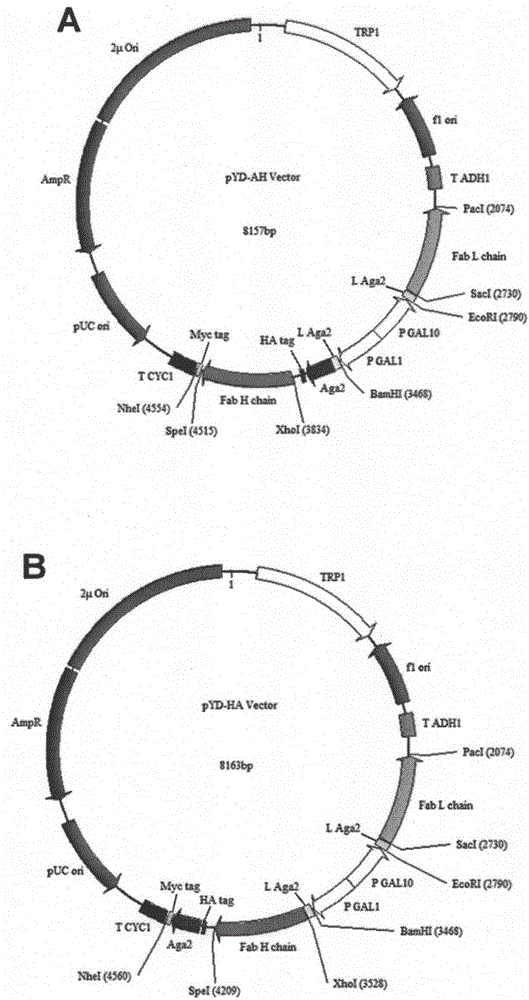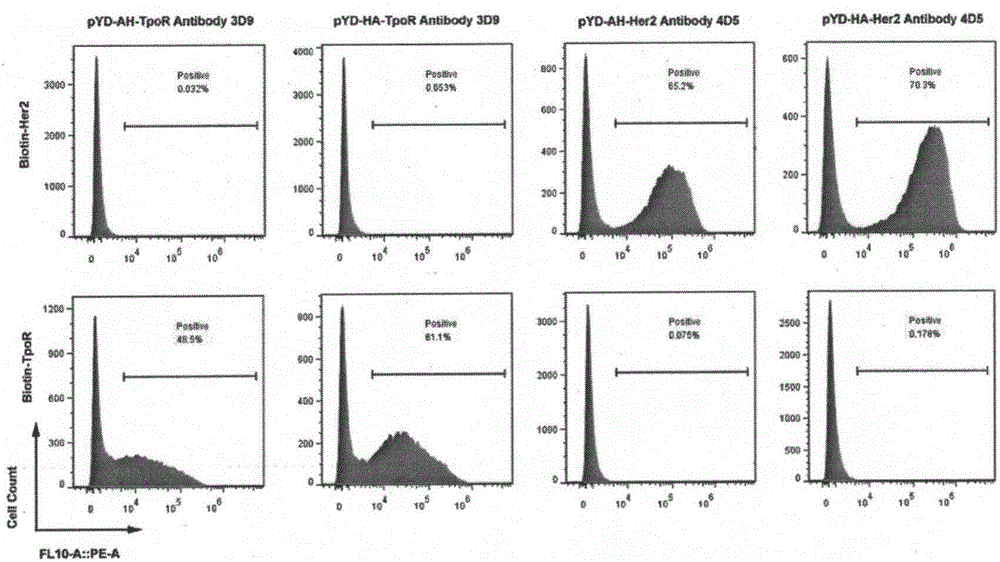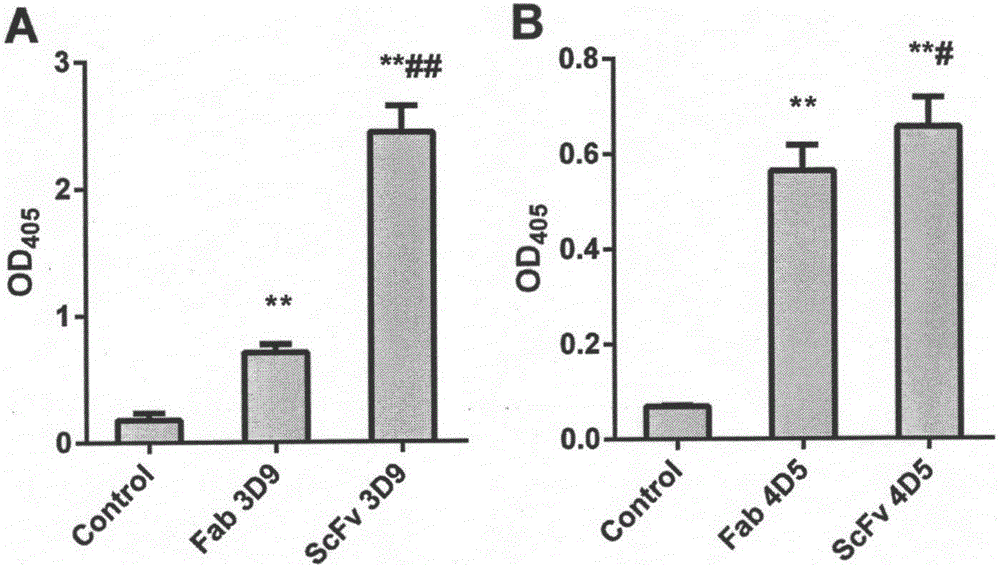Plasmid for displaying antibody Fab segment on yeast surface
A yeast surface display and antibody technology, applied in the introduction of foreign genetic material, application, fermentation and other directions using a carrier, can solve the problems of easy inactivation, easy residual yeast cells, yeast display technology relying on flow sorting, etc., to achieve convenient operation. Effect
- Summary
- Abstract
- Description
- Claims
- Application Information
AI Technical Summary
Problems solved by technology
Method used
Image
Examples
Embodiment 1
[0024] The map of the plasmid pYD-AH vector used to display antibody Fab fragments on the surface of yeast in this example is as follows figure 1 As shown in A, the map of the plasmid pYD-HA vector used to display antibody Fab fragments on the surface of yeast in this example is as follows figure 1 Shown in B. The sequences of the plasmids pYD-AH vector and pYD-HA vector include the yeast GAL1 / GAL10 bidirectional promoter, the light chain region of the Fab antibody expressed with the GAL10 promoter, and the heavy chain region of the Fab antibody expressed with the GAL1 promoter, wherein, The heavy chain region of the Fab antibody expressed with GAL1 as the promoter is fused with Aga2.
[0025] The sequences of the plasmids pYD-AH vector and pYD-HA.vector specifically include:
[0026] 1. Yeast TRP1 selection marker ORF (TRP1): Yeast auxotrophic selection marker TRP1.
[0027] 2. f1origin of ss-DNA replication (f1ori): a promoter that guides single-stranded DNA replication. ...
Embodiment 2
[0043] In order to detect whether the plasmids pYD-AH vector and pYD-HA vector in Example 1 can correctly display Fab antibodies in the yeast display screening system, thrombopoietin receptor (Thrombopoietin Receptor, TpoR) antibody 3D9 (this antibody is described in WO In 2014 / 035693A2, the sequence of the light chain region is SEQ ID NO: 3, the sequence of the heavy chain region is SEQ ID NO: 4) and human epidermal growth factor receptor 2 (Human Epidermal Growth Factor Receptor 2, Her2, also known as c-erb2 ) antibody 4D5 as an example for verification. The specific steps are:
[0044] (1) Subclone the 3D9 light chain region into the plasmid pYD-AH vector using restriction endonucleases PacI and SacI (NEB) according to the instructions of the plasmid map:
[0045] Add restriction endonuclease sites PacI (sequence ttaattaa) and SacI (sequence gagctc) to the 5' end and 3' end of the 3D9 light chain region respectively, and send to Gene Synthesis Company Shanghai Jierui Bioen...
Embodiment 3
[0055] Construct and detect a Fab antibody phage display plasmid consistent with the multiple cloning sites of the pYD-AH / pYD-HA plasmid system:
[0056] (1) The restriction site of the plasmid pcome3xss, which is commonly used in phage antibody display libraries, was transformed into a restriction site consistent with the pYD-AH and pYD-HA plasmid systems, and Fab 3D9 and Fab 4D5 were respectively constructed into the pcomb3xss plasmid. The constructed plasmid was transformed into Xl-1blue cells to produce antibodies displaying Fab 3D9, ScFv 3D9 ( image 3 .A), Fab4D5, ScFv 4D5 ( image 3 .B) the phage;
PUM
 Login to View More
Login to View More Abstract
Description
Claims
Application Information
 Login to View More
Login to View More - R&D
- Intellectual Property
- Life Sciences
- Materials
- Tech Scout
- Unparalleled Data Quality
- Higher Quality Content
- 60% Fewer Hallucinations
Browse by: Latest US Patents, China's latest patents, Technical Efficacy Thesaurus, Application Domain, Technology Topic, Popular Technical Reports.
© 2025 PatSnap. All rights reserved.Legal|Privacy policy|Modern Slavery Act Transparency Statement|Sitemap|About US| Contact US: help@patsnap.com



